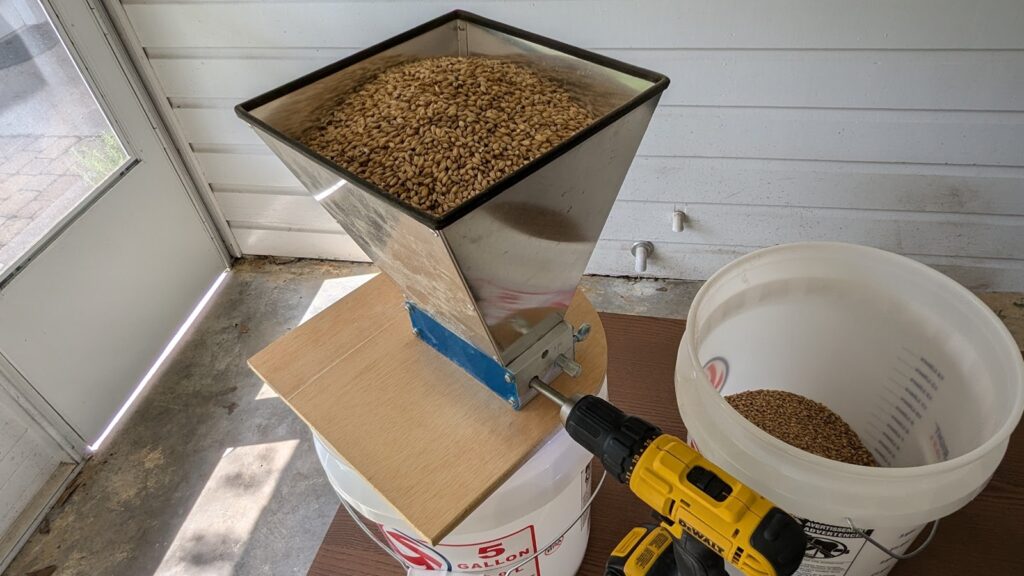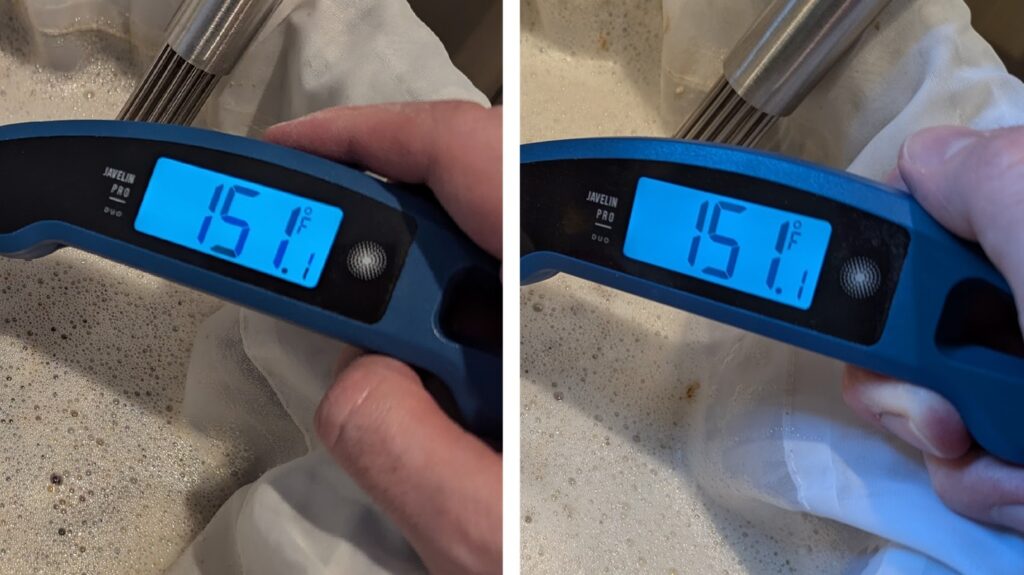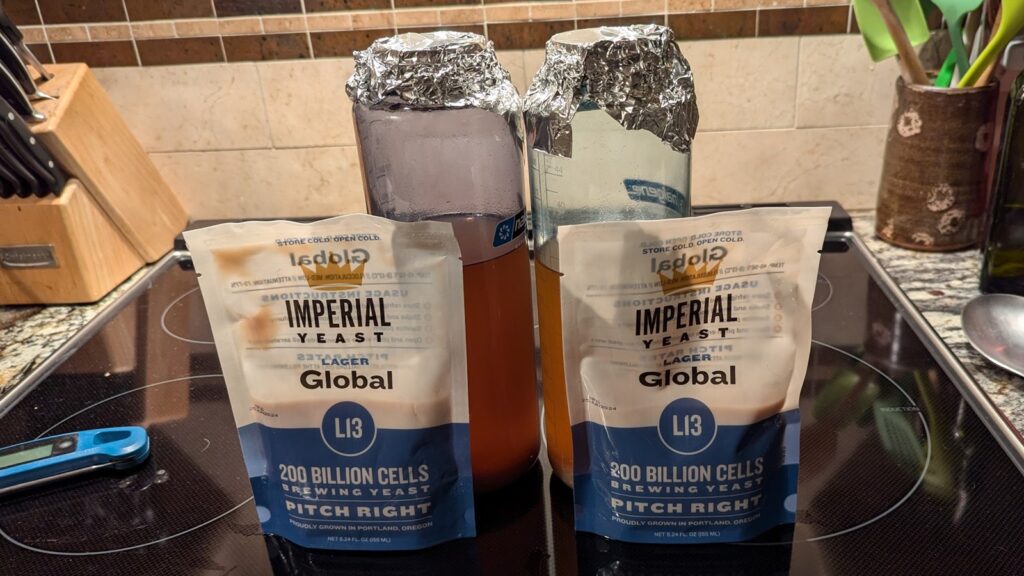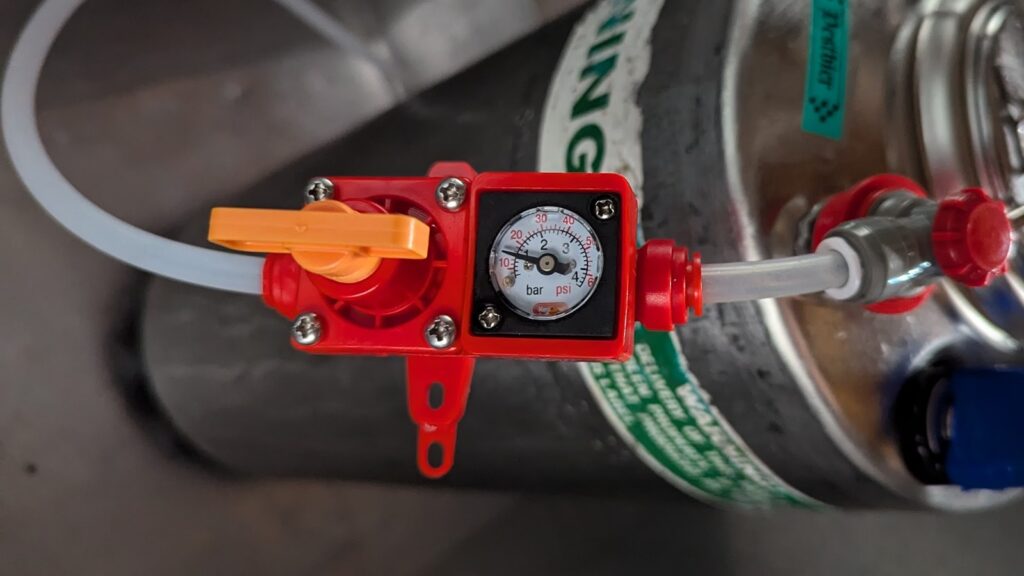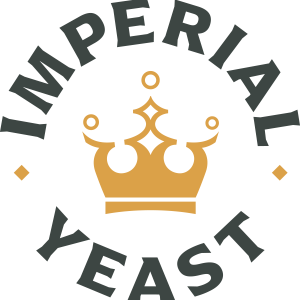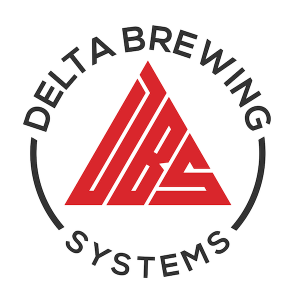Author: Alex Shanks-Abel
Lagers are notoriously difficult to make, at least when compared to ale, and one reason is that it involves fermenting at much cooler temperatures, which not only requires specialized gear, but a decent amount more time. While some brewers have opted to forgo the mandate to ferment lagers cool, at least when using certain yeast strains, many believe this results in undesirable characteristics, leading to the development of other techniques that promise to produce excellent warm fermented lagers.
One of the most commonly accepted methods for fermenting high quality lagers warm involves doing so under pressure, which is claimed to suppress the development of stylistically inappropriate esters by retarding yeast growth. Curiously, in two past xBmts, tasters were unable to consistently tell apart lagers fermented at 68°F/20°C under pressure from ones fermented at the same temperature under no pressure, which would seem to suggest no notable impact of pressurized fermentation. Similarly, multiple past xBmts comparing lagers fermented either warm or cool have returned non-significant results.
Recently, when reviewing these past xBmts, I noticed all have focused on a specific variable while all other variables were held constant – for those looking at the impact of pressurized fermentation, fermentation temperature was the same between the batches, while in those comparing different fermentation temperatures, the pressure was identical. While one can extrapolate from those results, particularly when viewed together, given claims that pressurized fermentation mitigates the negative effects of warm fermentation, it only seemed appropriate to compare a lager fermented warm under pressure to the same beer fermented cool under no pressure.
| PURPOSE |
To evaluate the differences between a Festbier fermented warm under pressure and one fermented cool under no pressure.
| METHODS |
Pairing delicate flavors with relative strength, I went with a simple Festbier recipe for this xBmt.
Vestbier
Recipe Details
| Batch Size | Boil Time | IBU | SRM | Est. OG | Est. FG | ABV |
|---|---|---|---|---|---|---|
| 5.5 gal | 60 min | 23.6 | 5.4 SRM | 1.059 | 1.012 | 6.17 % |
| Actuals | 1.059 | 1.012 | 6.17 % | |||
Fermentables
| Name | Amount | % |
|---|---|---|
| Floor-Malted Bohemian Pilsner Malt | 9 lbs | 72 |
| Munich Malt (Light) | 2 lbs | 16 |
| Vienna Malt | 1.5 lbs | 12 |
Hops
| Name | Amount | Time | Use | Form | Alpha % |
|---|---|---|---|---|---|
| Hallertauer Mittelfrueh | 30 g | 60 min | First Wort | Pellet | 4.4 |
| Hallertauer Mittelfrueh | 30 g | 20 min | Boil | Pellet | 4.4 |
| Hallertauer Mittelfrueh | 15 g | 1 min | Boil | Pellet | 4.4 |
Yeast
| Name | Lab | Attenuation | Temperature |
|---|---|---|---|
| Global (L13) | Imperial Yeast | 77% | 46°F - 55.9°F |
Notes
| Water Profile: Ca 42 | Mg 0 | Na 0 | SO4 40 | Cl 46 |
Download
| Download this recipe's BeerXML file |
I started my brew day by adding identical volumes of water to separate BrewZilla units, adjusting both to the same desired mineral profile, then setting the controllers to heat them up, at which point I weighed out and milled the grains.
Once the water for each batch was adequately heated, I incorporated the grains then checked to make sure both were at the same target mash temperature.
While the mashes were resting, I prepared the kettle hop additions.
Once each 60 minute mash was complete, I removed the grains then boiled the worts for 60 minutes before chilling and taking hydrometer measurements, which showed the worts were at the same OG.
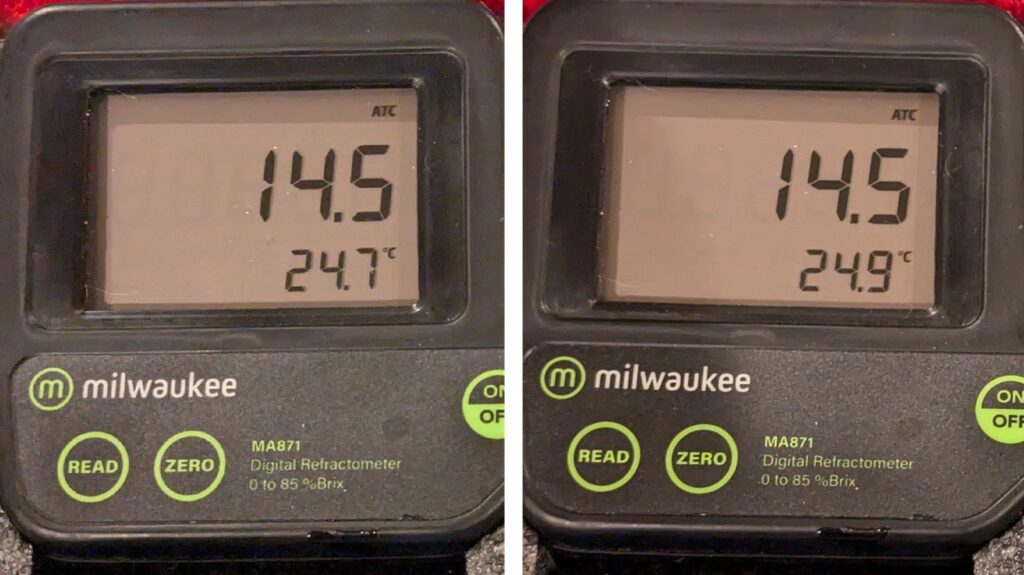
The filled carboys were placed in my chamber and left to finish chilling to their respective fermentation temperatures, at which point I used remnant wort from each batch to create vitality starters of Imperial Yeast L13 Global.
With the worts stabilized at their fermentation temperatures of 50°F/10°C and 68°F/20°C a few hours later, I pitched the yeast starters then placed spunding valves on each fermentation keg, setting the cool fermented batch to 0 psi and the warm fermented batch to 15 psi.
Activity was observed to be rather vigorous in the pressurized warm fermentation beer the following day, while the cool fermentation beer was much calmer. By 3 days post-pitch, activity was absent in the pressurized warm fermentation batch, so I took hydrometer measurements indicating it had reached the predicted FG while the cool fermentation beer was several SG points behind. At the 1 week mark, both beers were at the same FG.
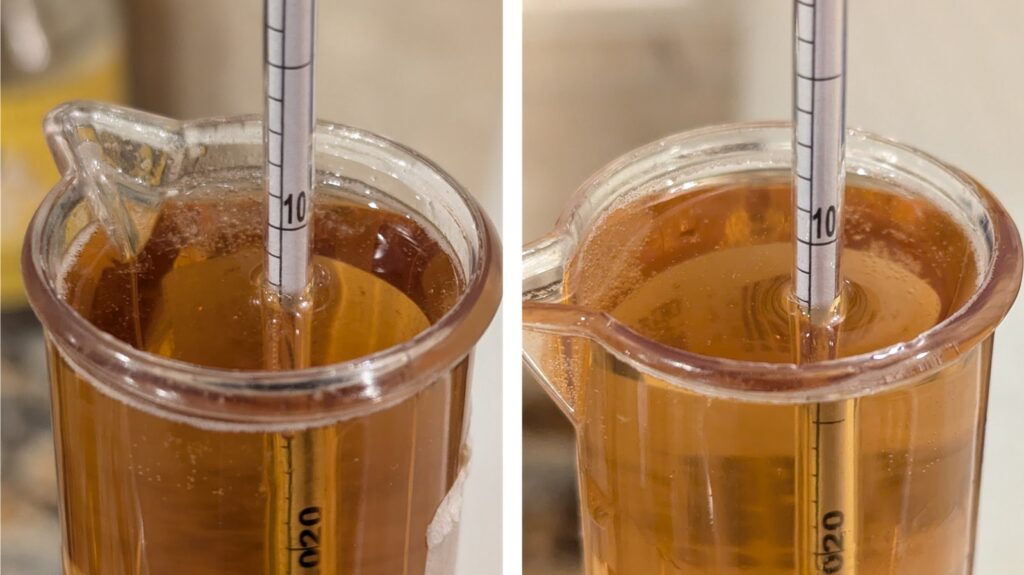
At this point, I transferred the beers to CO2 purged kegs then placed them next to each other on gas in my keezer where they were left to lager for 4 weeks before they were ready for evaluation.

| RESULTS |
A total of 26 people of varying levels of experience participated in this xBmt. Each participant was served 2 samples of the beer fermented warm under pressure and 1 sample of the beer fermented cool under no pressure in different colored opaque cups then asked to identify the unique sample. While 14 tasters (p<0.05) would have had to accurately identify the unique sample in order to reach statistical significance, just 9 did (p=0.52), indicating participants in this xBmt were unable to reliably distinguish a Festbier fermented under 15 psi of pressure at 68°F/20°C from one fermented under no pressure at 50°F/10°C.
My Impressions: Out of the 5 semi-blind triangle tests I attempted, I correctly identified the odd-beer-out just twice, and those were admittedly lucky guesses. These beers were identical in every way to me, both possessing a soft malt sweetness that was balanced by wonderful noble hop character and a super clean fermentation that made them very enjoyable to drink.
| DISCUSSION |
While pressurized fermentation has been used by commercial brewers for quite a while, it seems to have caught the interest of homebrewers sometime in the last decade, unquestionably due to claims it allows lagers to be fermented warm without producing undesirable esters. While several past xBmts have shown that neither fermentation temperature nor pressurized fermentation have a substantial impact, at least when using certain lager yeasts, some continue to swear by this method. Ultimately, tasters in this xBmt were unable to reliably distinguish a Festbier fermented under 15 psi of pressure at 68°F/20°C from one fermented under no pressure at 50°F/10°C.
The easiest and perhaps most knee-jerk interpretation of these results is that they confirm popular claims that pressurized fermentation mitigates the ester production produced when fermenting lagers warm. However, when viewed in light of past xBmts focused specifically on either variable on their own, most of which produced similarly non-significant findings, this interpretation becomes less plausible. Rather, it seems more likely the Weihenstephaner lager yeast strain is simply robust enough withstand varying temperatures and pressures, the latter of which may not have much of an impact at all.
I’ve brewed many lagers over the years using a range of approaches, and from those experiences I ultimately settled on pressurized warm fermentation. However, my choice to ferment under pressure has nothing to do with ester production, as that’s never been an issue for me, but rather convenience – it makes purging my serving keg with naturally CO2 easier, leading to saved time and money. As such, I’ll continue doing what I’ve been doing, though with a notable shift in my perspectives on age-old ideas about lager fermentation.
If you have any thoughts about this xBmt, please do not hesitate to share in the comments section below!
Support Brülosophy In Style!
All designs are available in various colors and sizes on Amazon!
Follow Brülosophy on:
FACEBOOK | TWITTER | INSTAGRAM
If you enjoy this stuff and feel compelled to support Brulosophy.com, please check out the Support page for details on how you can very easily do so. Thanks!


